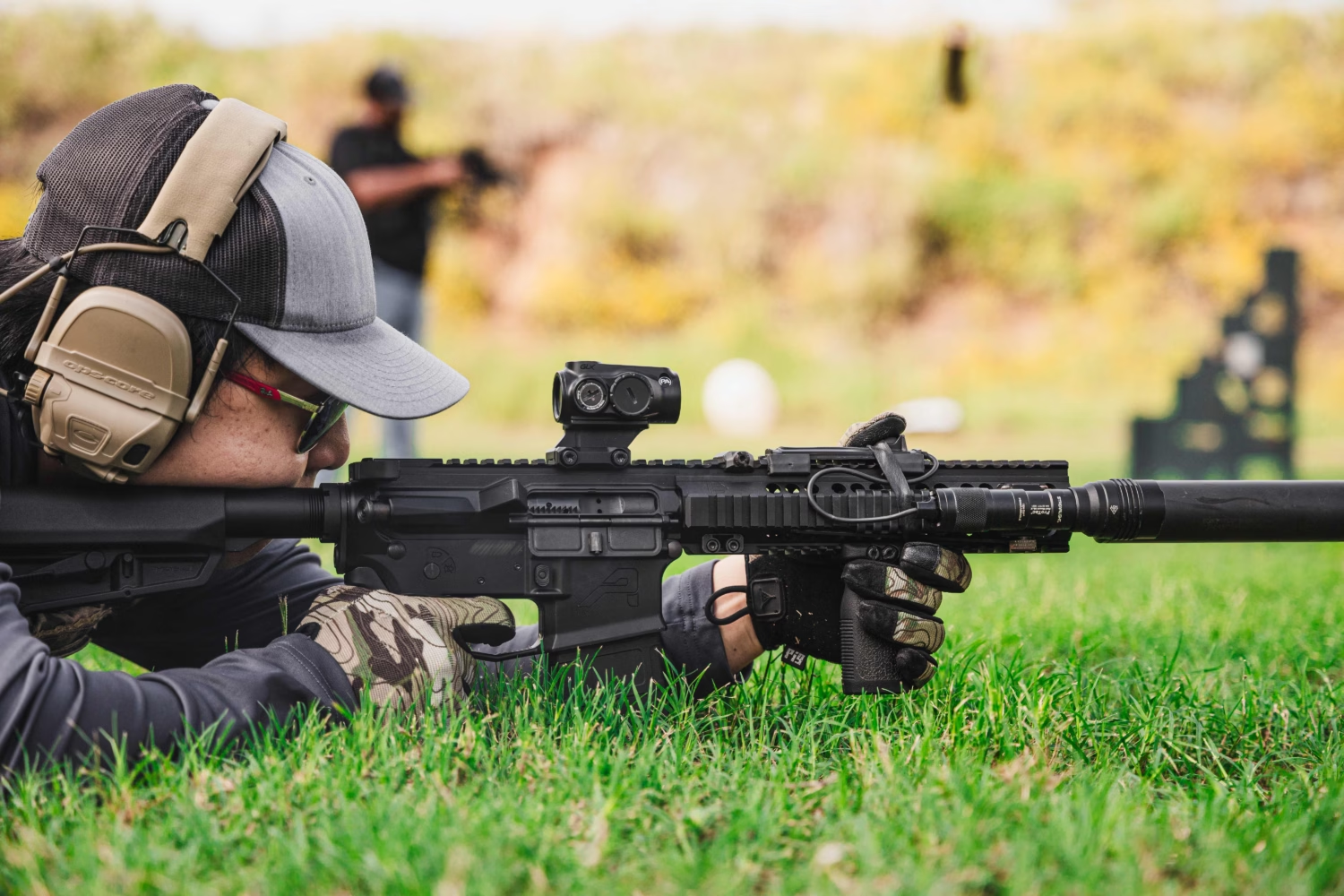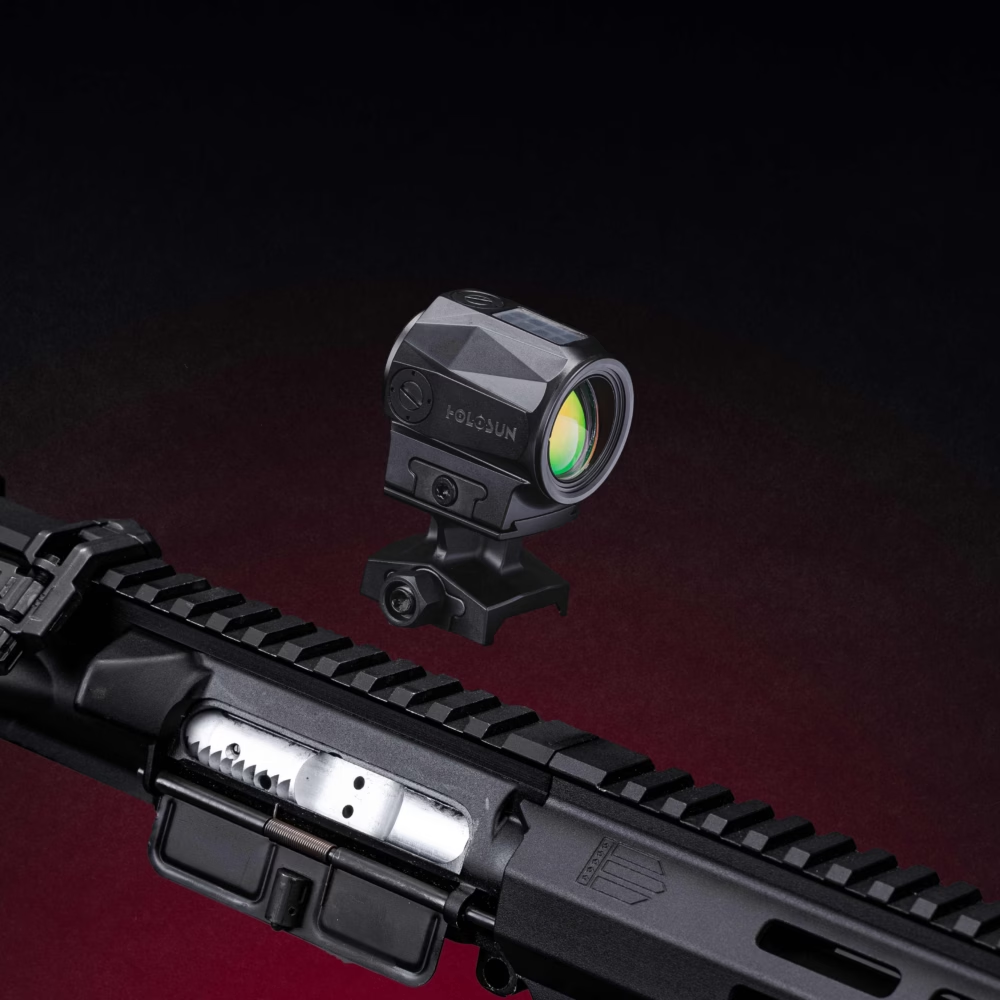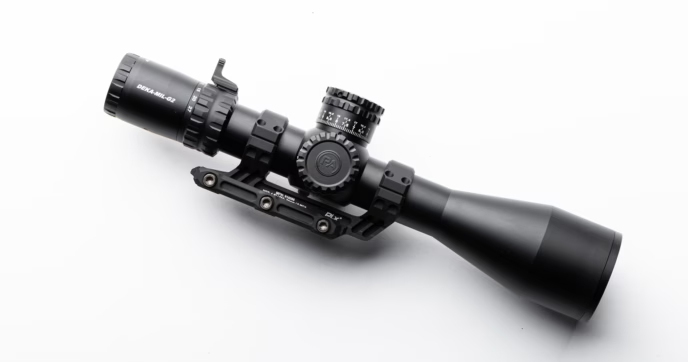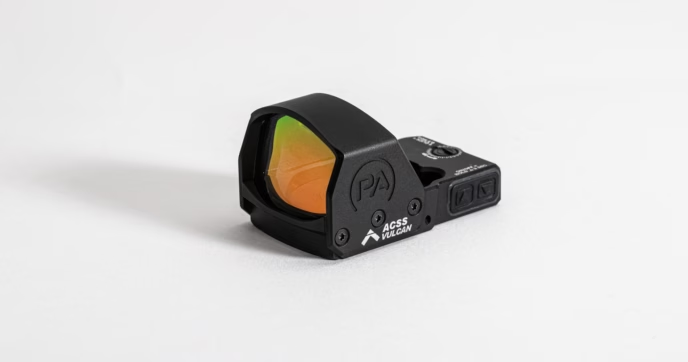Whether you’re a seasoned marksman or a budding novice, you’ve probably heard of parallax before. The market is awash with red dots advertising themselves as parallax-free, and if you’ve spent any time behind the scope of a long-range precision rifle, you probably have an idea of how it works with those sorts of optics. Many Primary Arms rifle scopes even offer the ability to adjust their parallax to correct for any errors it may introduce.
What few understand, though, is how parallax comes into play with red dot optics. We all know that “parallax-free” is a good thing, but seldom does anyone have a comprehensive understanding of why, or in which scenarios it truly matters.

What is Parallax?
Parallax is the perceived shift in the location of an object that occurs when you view it from different locations.
To get an idea of how this works, close your left eye and point your finger at an object a short distance away. Then, switch your eyes, closing your right eye and opening your left one. Your finger should appear to move a few inches. This is caused by parallax.
The act of pointing a finger creates an alignment between three objects: your eye, your finger, and whatever you are pointing at. When you change the location of the object doing the viewing—your eye—you correspondingly change what is being pointed at by your finger. Your finger doesn’t actually move, but it seems like it does.
This is, in essence, parallax. There are more technical definitions and more scientific applications, particularly in astronomy and physics, but this basic understanding is more than enough for most people.

How Does Parallax Effect Marksmanship?
In our previous example, we lined up our eye, our finger, and a random object. The process of pointing a finger and aiming a firearm with a red dot sight is more or less the same. With a firearm, you are lining up your eye, the dot of your optic, and your target.
In the same way that changing which eye you are using to view your finger can affect what you perceive it to be pointed at, moving your eye behind your optic can change where you perceive your dot to be pointed.
This matters, because if your red dot is not parallax-free, then the position of your eye behind it can influence where your shots land—sometimes enough to turn what should have been a hit into a miss. This phenomenon is known as parallax error.
When we zero our optics, we tend to do so carefully. We line up our sights very precisely with our firearm in a stable position and our eye directly centered behind the reticle. But actual marksmanship is rarely so precise. When firing from a position in the field or on the move during a competition, you might not have the luxury of taking the time to precisely arrange your head position.
In this case, the change in position from having your eye directly centered behind the dot to having it off to one side can cause the dot to appear to be on target even though your firearm is now aligned differently than it was when you zeroed your optic, causing your point of impact to differ from your point of aim.

Red Dots and Parallax
Because many, if not most, modern red dot optics are parallax-free, parallax is less of an issue for red dots than it is for rifle scopes. Nevertheless, it can still be an issue, particularly with budget or older optics.
A parallax-free red dot sight uses various design elements to reduce or eliminate the effects of parallax at reasonable distances. This means that regardless of where your eye is located behind the optic, the dot will remain on the target, and your hits will remain aligned with your point of aim.
This is particularly important with any red dot that is intended for use on a pistol, such as a mini reflex sight like the Primary Arms GLx® RS-15. Handgun marksmanship is inherently imprecise, with a much greater degree in the variation of head position than rifle marksmanship. If you’re engaging targets while moving, such as in a defensive training course or competition, you won’t have time to ensure your eye is perfectly centered behind your sight. Here, a parallax-free dot like the Primary Arms SLx RS-10 really shows its value.
To test if your red dot is parallax-free, you can aim at a target in the distance and move your head around behind the optic while keeping the optic itself stationary. Choose an object at least 25 yards away for accurate results. If the dot moves off the target when you move your head, that’s the effect of parallax. If the dot remains on the target despite your movement, your optic is parallax-free.
It’s important to note that the perceived location of the dot within the body of the optic may move regardless—that’s an inevitable part of looking through the optic body from a less-than-aligned angle. That doesn’t indicate the presence of parallax in and of itself, so even if the red dot appears to move within the body of your optic when you move your head, as long as it stays on the target, your dot is parallax-free.

Why Are Some Red Dot Lenses Slanted?
It’s rather common, upon getting your first red dot sight, to open up the package, take a look at it, and realize the front lens is crooked. For most, this is a moment of irritation, as they think that their brand-new optic was incorrectly assembled. The effect is most noticeable with larger red dots, such as the Primary Arms SLx® MD-25 Gen 2, because the degree of the angle is generally proportionate to the size of the optic body.
In truth, the front lens isn’t crooked, it’s slanted, and it’s by design. Nearly every red dot in existence uses a slanted lens of some sort, as it’s practically required for the technology to work.
The basic concept of a reflex sight relies on projecting a reticle onto a glass lens using a laser or light-emitting diode of some kind. The user then sees this light reflected back at them and uses it to aim. But, in order for the user to see that light, the lens must be slanted. If it was perfectly square to the emitter, then the light would be reflected directly back at the source, not bounced at an angle to be visible from the middle of the eye box. But since emitters in the housing of the optic, they are never square to the lens, but instead pointed at the center. In this case, if the lense was perfectly square, the light produced by the emitter would bounce off of it and hit the far side of the housing, rather than being reflected at the user’s eye.
You’ll typically notice this effect most strongly with microdots, like the Primary Arms SLx® MD-21, as the cylindrical body makes the slanted lens more noticeable. Mini reflex sights also use slanted lenses but often have slanted housings as well, so the angle can be harder to detect.
While several holographic sights may appear to have a square front lens, they actually are slightly slanted, just at a less steep degree than red dot sights due to their design and internal geometry. For a full breakdown of the differences between the two optics, check out our article on holographic vs red dot sights.

Conclusion
Parallax is a somewhat complicated concept, but its applications to firearm optics are very simple. While it can be a problem if not accounted for, by choosing parallax-free red dots and understanding how to work around parallax when it is present, you can minimize or eliminate any loss of accuracy it may cause very easily.



